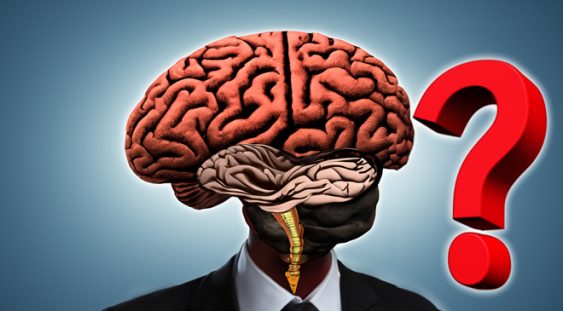- IA dezvăluie diferențe cerebrale distincte între bărbați și femei
- Vănătorul de minciuni cu Grigore Cartianu - invitat ambasadorul Constantin Teleagă
- Lentila de contact cu Stelian Tănase - Hrusciov a plecat în SUA
- David Copperfield acuzat de violență sexuală de către șaisprezece femei
- România înregistrează o creștere semnificativă a speranței de viață
Why Your Brain Masters Four Objects but Stumbles with Five

|
Getting your Trinity Audio player ready...
|
Analysis of neuron activity reveals that the brain employs distinct mechanisms for counting from one to four as opposed to counting five or more
For over a century, researchers have been aware that people are generally adept at estimating quantities of four or fewer items through visual assessment. However, the accuracy of this estimation diminishes significantly, with increased slowness and a higher likelihood of errors, as the numbers involved grow larger.
Now, scientists have unraveled the reason behind this phenomenon: the human brain employs one mechanism to assess quantities of four or fewer items and a distinct mechanism for quantities of five or more. These findings, based on the recording of neuron activity in 17 human participants, provide a conclusive resolution to a longstanding debate regarding how the brain gauges the number of objects a person perceives. The results of this research were published in the journal Nature Human Behaviour on October 2.
This discovery has implications for our understanding of cognitive processes, as noted by psychologist Lisa Feigenson, co-director of the Johns Hopkins University Laboratory for Child Development in Baltimore, Maryland. „Fundamentally, the question revolves around the mental architecture: what are the fundamental components that underlie human thought?”
An enduring debate that has persisted for many years
The human capacity to accurately estimate large quantities has remained a perplexing question for generations of scientists. In an 1871 article published in Nature, economist and logician William Stanley Jevons detailed his inquiries into his own counting abilities and arrived at the conclusion that „the number five is beyond the limit of perfect discrimination, at least for some individuals.”
Various researchers have debated whether the brain employs a singular estimation system, albeit less precise for larger numbers, or if there are two distinct neuronal systems dedicated to quantifying objects. However, previous experiments have failed to definitively establish which model is accurate.
Subsequently, a team of researchers had a unique opportunity to observe the activity of individual neurons in the brains of awake individuals. All of these individuals were undergoing treatment for seizures at the University Hospital Bonn in Germany and had microelectrodes implanted in their brains in preparation for surgery.
The researchers presented images of varying quantities of dots, ranging from zero to nine, on a screen to the 17 participants for half a second. They then asked the participants whether they had observed an odd or even number of items. As anticipated, the participants provided more precise answers when they viewed four or fewer dots.
Prior research had already indicated that there are specialized neurons associated with specific quantities of items. Some neurons predominantly fired in response to the presence of a single object, while others exhibited increased activity when presented with two objects, and so forth.
Upon analyzing the neuronal activity of the participants, it became evident that neurons specialized in quantities of four or less exhibited highly specific and selective responses to their preferred numbers. In contrast, neurons specializing in quantities from five to nine exhibited strong responses to their preferred numbers but also responded to immediately adjacent numbers
Neurons specialized in numerical perception displayed an interesting trend
As co-author Andreas Nieder, an animal physiologist at the University of Tubingen in Germany, points out that „The higher the preferred number, the less selective these neurons were.” For instance, neurons specifically attuned to the number three exhibited responses exclusively to that number, while neurons with a preference for eight would respond to eight but also to seven and nine. Consequently, individuals made more errors when attempting to quantify larger numbers of objects.
This observation hints at the presence of two distinct ‘number systems’ within the brain. Nieder was taken aback, as he had previously believed in the existence of only one mechanism. „I had reservations about the existence of such a clear dividing line. However, based on this data, I must acknowledge it,” he acknowledges.
Feigenson concurs with this conclusion, describing the findings as „remarkable.” She asserts that they align with behavioral research suggesting the existence of two mental systems involved in representing quantities of objects.









